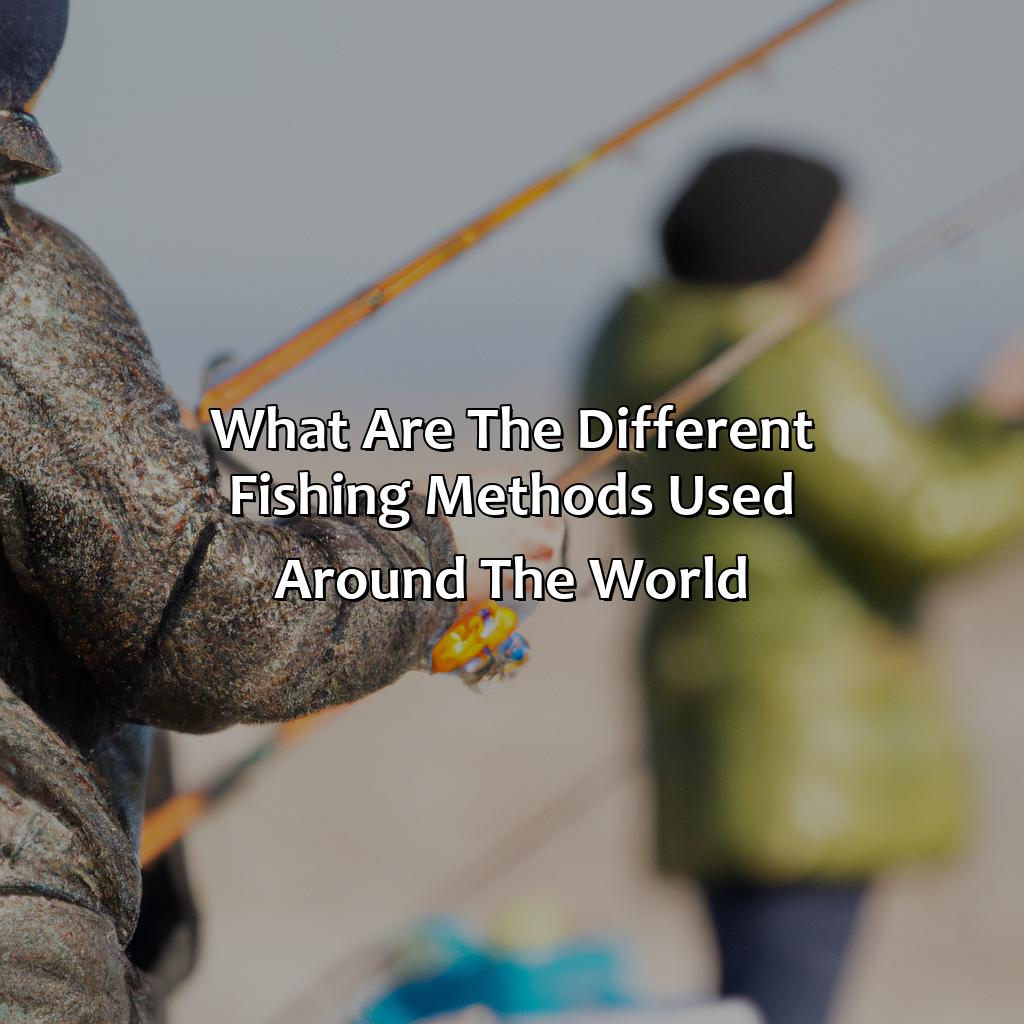Key Takeaway:
- There are various traditional fishing methods including subsistence fishing, trap fishing, handline fishing, and spearfishing that have been used around the world for generations.
- Modern fishing methods such as trawling, longlining, purse seining, and fish trapping have greatly impacted the global fishing industry with their large-scale commercial and industrial practices that can result in overfishing and bycatch, threatening the sustainability of fish populations and habitats.
- To promote sustainability in fishing, it is essential to reduce bycatch, preserve fish habitats and biodiversity, and enforce fishing regulations and laws. Choosing sustainable fishing practices and seafood can also contribute to the preservation of marine life and conservation efforts.
Traditional Fishing Methods
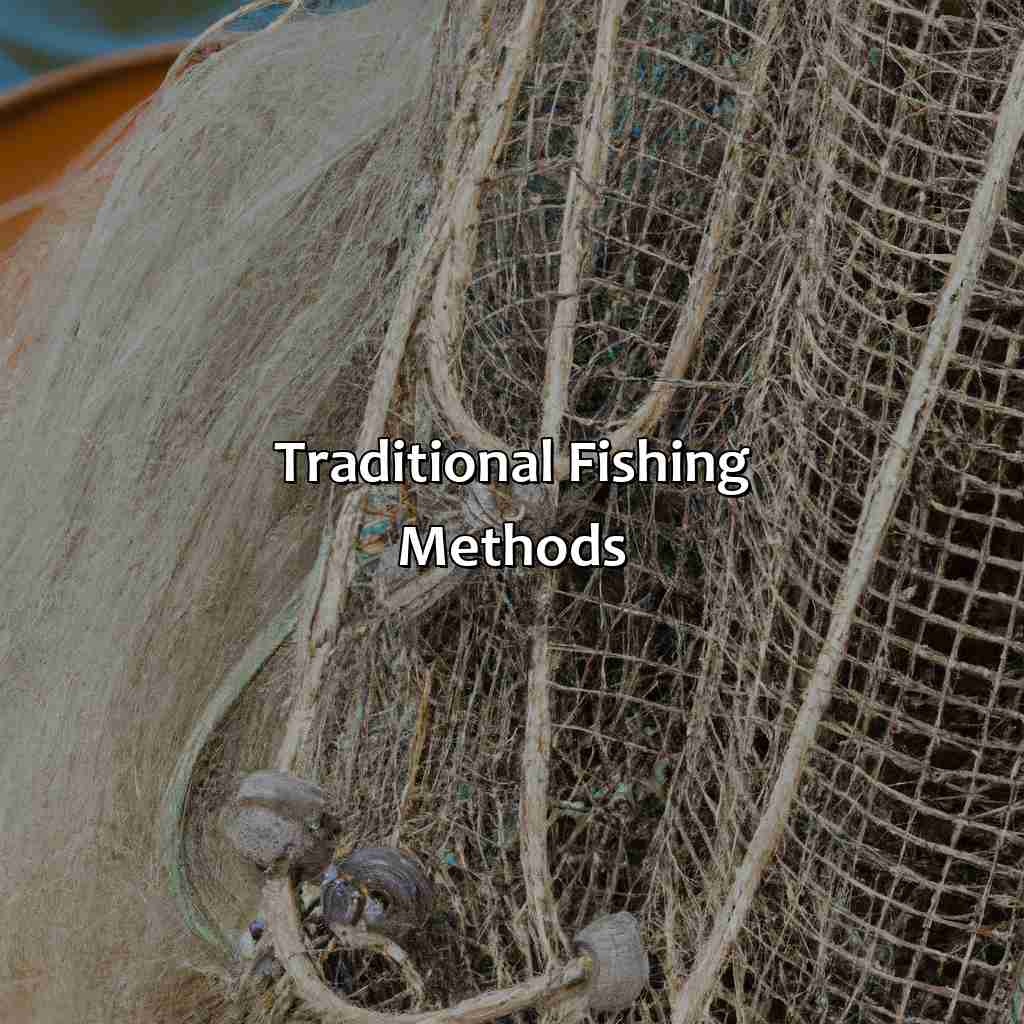
Photo Credits: anglinginsight.com by Dennis Lopez
Discover the traditional fishing methods employed across the world for sustainable practices! These methods have been used for generations to obtain food and income from water bodies.
We will investigate trap fishing techniques such as crab and lobster potting, as well as the traditional spearfishing and harpooning techniques.
Subsistence Fishing
Fishing techniques used for sustenance purposes is a widely applied traditional practice. The approach of subsistence fishing varies by region and availability of resources.
Subsistence fishing involves gathering or catching fish for consumption, and frequently implements methods like fishing with nets, fishing with traps, or handline fishing to attain this goal.
Fishing with nets encompasses techniques like seine nets and cast nets. In trap fishing, certain types of traps catch the fish passively without human presence. Meanwhile, handline and longline alternatives are active methods where an individual attracts the fish to bait to catch them.
Moreover, it is interesting to note that subsistence fishing techniques have become more advanced over time with innovative solutions being developed worldwide. However, it should be noted that these primitive practices must be carried out within regulated boundaries to ensure sustainability in the industry.
Don’t miss out on sustainable subsistence fishing practices that preserve marine resources while accomplishing production goals.
Trap fishing may be effective for catching crabs and lobsters, but it’s not very sporting to sucker-punch your dinner before you eat it.
Trap Fishing
Trap fishing, also known as crab potting or lobster potting, is a traditional fishing method that involves the use of baited traps to lure fish and other sea creatures into capture.
A three-step guide to trap fishing is as follows:
- Place bait, such as fish heads or squid, inside the trap.
- Drop the trap into the water and wait for it to attract fish or other seafood.
- Retrieve the trap and collect any captured seafood.
Trap fishing is an effective and sustainable way to catch fish in certain areas, as it minimizes bycatch and allows for selective harvesting of target species.
In contrast to more modern fishing techniques, trap fishing does not involve large-scale nets or long lines, which can harm marine ecosystems by inadvertently catching non-target species. Additionally, because traps are stationary and do not actively pursue schools of fish through the water, they have minimal impact on ocean habitats.
An example of successful trap fishing took place in the waters off Southern California in 2020. There, a group of local fishermen collaborated with scientists from the Hubbs-SeaWorld Research Institute to use specially designed traps to capture white seabass in a sustainable manner over several months. The project was considered a success due to its careful management practices and focus on conservation efforts.
Get ready to reel in the laughs with handline fishing, the old school method that’s still a catch of the day.
Handline Fishing
Using a single fishing line with a baited hook attached, handline fishing is a simple yet effective method used by many subsistence fishermen in developing countries.
Here’s a 5- step guide to understanding Handline Fishing:
- Find a suitable location with good water and plant life.
- Tie the line to one end of the rod while attaching the hook and weight on the other.
- Cast the line into the water and wait until the fish bite.
- When you feel a tug, reel in slowly but steadily to avoid breaking the line.
- Once you’ve caught the fish, remove it from the hook and repeat.
Handline fishing can be done alone or in groups and is known for being an inexpensive, low-tech alternative to more advanced methods.
Unlike traditional net-fishing techniques, handline fishing allows fishermen to target specific species while avoiding harming other marine animals through bycatch.
To ensure sustainable use of this method, fishermen must follow regulations and techniques that preserve fish habitat in addition to reducing bycatch efforts.
Don’t miss out on mastering this simple yet effective fishing method for pursuing your passion or even survival needs!
Looking to get in touch with your inner caveman? Try spearfishing, the ultimate harpooning experience.
Spearfishing
Here are some key points about spearfishing:
- It requires skill and patience to master.
- Spearfishing can be done in shallow or deep waters.
- It is mainly done solo, but can also be done in pairs or groups.
- Spearfishing can target specific species of fish.
- It is a sustainable fishing method since there is no bycatch involved.
- Safety precautions must be taken to avoid injury while handling the spear and while diving underwater.
When practicing spearfishing, it’s important to know your limitations as well as your surroundings. Avoid entering restricted areas and being mindful of marine conservation practices ensure sustainability.
Pro Tip: Before you start spearfishing, always check local regulations and guidelines for the area where you plan on fishing.
Modern fishing methods may provide us with an abundance of seafood, but at what cost to the depletion of fish populations and destruction of marine habitats?
Modern Fishing Methods
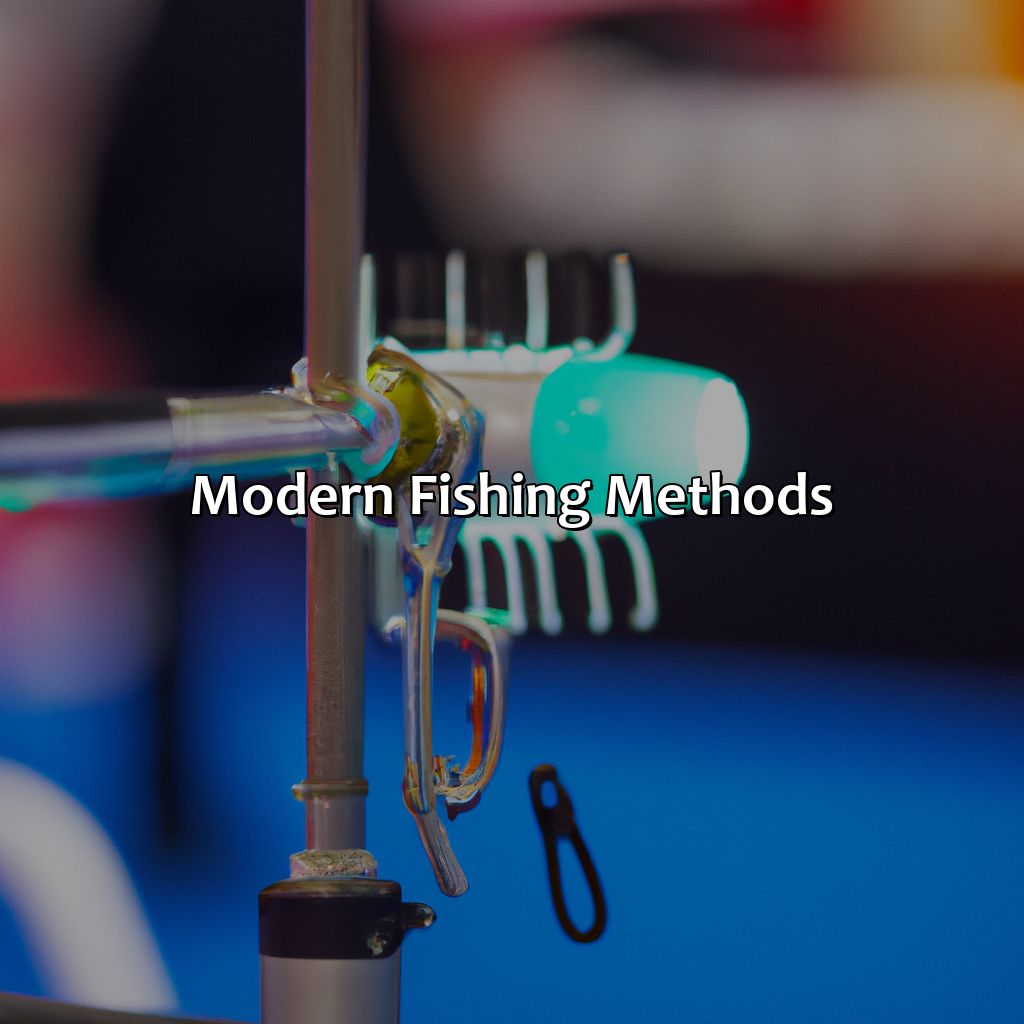
Photo Credits: anglinginsight.com by Billy Anderson
Want to learn about modern fishing techniques? We’ll explore solutions to tackle commercial fishing, industrial fishing, overfishing, bycatch, fish populations, fish stocks, and fish habitats. We’ll cover four sub-sections, including Trawler Fishing, Longline Fishing, Purse Seine Fishing, and Fish Trapping. Keywords will be used to quickly explain the fishing techniques used around the world.
Trawler Fishing
Trawler fishing is a commercial method of fishing that involves towing large nets behind a boat to catch fish. It is highly efficient and catches large amounts of fish, but often results in substantial bycatch and can harm fish populations and stocks.
| Method Name | Description | Pros | Cons |
| Trawler Fishing | A commercial method of fishing that involves towing large nets behind a boat to catch fish. | Highly efficient, catches large amounts of fish. | Often results in substantial bycatch and can harm fish populations and stocks. |
Trawling may impact the marine ecosystem by destroying habitats and reducing biodiversity. This can result in negative effects on local fishing communities.
To reduce the negative impacts of trawling, regulations should be implemented that limit the amount of bycatch allowed. Additionally, alternative methods should be explored including using smaller nets, avoiding sensitive areas, and utilizing new technologies for selective fishing.
Sustainable trawling practices may help maintain healthy fish populations and reduce the impact on marine ecosystems.
Longlining: the fishing method that targets the few and catches everything else.
Longline Fishing
Longlining is a prevalent commercial fishing method that involves using a central fishing line with numerous baited hooks attached to it, which are distributed in water. The line can be spread for up to many miles, and it can attract large pelagic fishes like tuna, swordfish, and shark. This technique enables fishermen to catch more fish with less effort; however, longlining can have detrimental effects on the population of non-target species called bycatch.
Bycatch in longline fishing is often a significant problem because this method aims to catch as many fish as possible. Avoiding catching non-target fish like turtles, seabirds or sharks has become an intricate challenge that fishermen must overcome. Moreover, longlining can cause severe harms on the marine ecosystem due to overfishing and depletion of fish stocks. Fish populations in certain areas could be struggling to recover from these unsustainable practices.
It is recommended for fishermen relying on longlining methods to pay close attention and adopt sustainable measures that promote environmental conservation. Reducing bycatch rates can lower potential mortality due to incidental catches while also producing higher quality catches for market use. Restoring degraded ecosystems is crucial because they foster a more balanced approach for managing fish populations. Using techniques that avoid the depletion of important species such as sharks would ensure ongoing resource management and sustained yields in the future.
Purse seine fishing: making sure we empty the ocean of everything but the fish we’re after.
Purse Seine Fishing
Purse seining is a fishing method that involves large nets being used to encircle a school of fish before pulling them out of the water. This technique can result in high catches but also has concerns with bycatch and overfishing, affecting fish stocks and populations.
The method involves surrounding a school of fish with a large net, called a purse seine, which is then closed at the bottom to trap the fish inside. The fish are then pulled up and into the boat. While this method allows for large catches, it also frequently results in catching non-targeted species, known as bycatch.
Bycatch reduction methods can be implemented to minimize the impact on other marine life. One way this has been done is through using acoustic sensors to help identify schools of target species before the net is dropped.
It is crucial to consider sustainable fishing practices when using any type of fishing method, including purse seining. Overfishing can lead to the depletion of important marine populations and negatively affect ocean ecosystems.
A true fact related to this topic is that according to an article by Environmental Defense Fund, around 20% of all global food protein comes from fisheries and aquaculture.
Fish trapping: Because sometimes catching fish is just like catching feelings, you have to set the right bait and wait for them to come to you.
Fish Trapping
Fish Trapping: A Method for Catching Fish in a Sustainable Manner
Fish trapping is a method used to catch fish in a sustainable manner. It involves setting up a trap in an area where fish are abundant, allowing them to swim into the trap and get caught. This method is commonly used by small-scale fishermen who rely on fishing for subsistence or as a source of income.
4-Step Guide for Effective Fish Trapping:
- Choose an appropriate location – Look for places with high fish density and ensure that the trap is placed in water of adequate depth.
- Set up the trap – The trap consists of nets or baskets attached to a frame which is anchored to the seabed. Bait can be placed inside for attracting fish.
- Monitor the trap – Check regularly to ensure that trapped fish do not die due to overcrowding or water depletion.
- Harvest and release – Once enough fish have been caught, they can be carefully removed from the trap and assessed against local regulations before being released or kept.
This method of fishing is relatively environmentally friendly compared to other fishing methods that result in bycatch, habitat destruction and overfishing. Fish trapping also has unique qualities compared to other methods like trawling, longlining and purse seiner fishing, making it an important alternative option.
To ensure sustainability, it’s important to follow local regulations regarding catch size limits, catching season timeframes, mesh size used and etcetera. Additionally using traps made from biodegradable materials such as wood rather than plastics make effective ways of minimizing environmental damage.
Recreational fishing: because who needs a therapist when you can just spend a day on the water with your fishing gear and your thoughts?
Recreational Fishing Methods
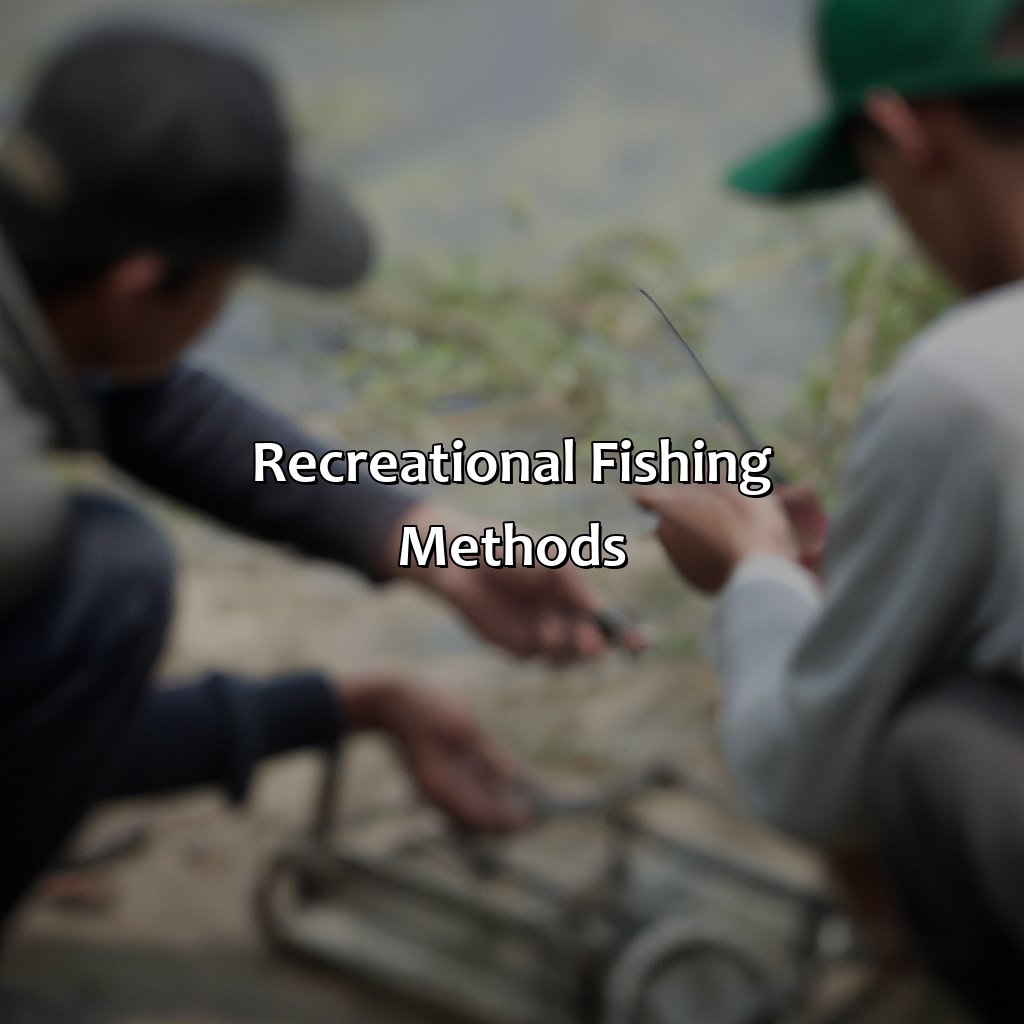
Photo Credits: anglinginsight.com by Gerald Nguyen
Anglers can pursue recreational fishing methods such as catch and release, tournament fishing and equipment. This includes lures, bait, reels, rods, line, knots, boats, and licenses.
This section focuses on fly fishing techniques, such as fly tying and gear. Casting and spinning methods are also discussed.
Fly Fishing
Here’s a 5-Step Guide to Fly Fishing:
- Get the right gear: Select the appropriate fly rod, reel, line, leader, and tippet based on your target species and fishing location.
- Learn fly tying: Create your own flies or purchase them from local shops specific to your target species and water conditions.
- Choose the right technique: Understand the various techniques such as dry fly fishing, nymphing, streamer fishing, and others.
- Master casting: Practice casting with proper form to accurately place your fly in ideal spots.
- Observe the water: Read the water currents, temperature changes, rising fish patterns, and other environmental cues to optimize your catch.
Fly Fishing also involves using advanced technology like GPS mapping software and underwater cameras to assist in finding optimal fishing locations.
In addition, understanding entomology – analyzing insect species present in streams or lakes – is fundamental in successful fly fishing techniques.
Don’t miss out on this therapeutic experience by trying out Fly Fishing; grab your gear today!
Casting may not be rocket science, but it sure feels like it when you keep missing the fish.
Casting
By using Casting, fishermen can target specific areas of water where fish are likely to be found. This technique requires a good amount of skill, as it involves finding the right balance between distance and accuracy when releasing the bait. Casting is commonly used in freshwater and saltwater environments for catching a variety of gamefish species.
Some anglers prefer using Casting over other techniques because it offers more control over how their bait lands in the water. Additionally, casting enables fishermen to experiment with different types of lures based on their preferred species or location.
According to research published by Marine Science Today, casting has become one of the most popular angling methods globally due to its accessibility and versatility.
Spinning may be a fun fishing method, but if you spin too much, you might just make yourself dizzy enough to catch nothing but a headache.
Spinning
Angling with spinning gear for fish catching is called spinning. It involves using a rod with a fixed spool casting reel and placing an artificial lure into the water before reeling it in to attract fish. Spinning is one of the most popular fishing methods because it is versatile, easy to learn, and can target various types of fish species.
The technique works by casting or pitching a weighted or unweighted lure that mimics the movement of small baitfish. Once in the water, the angler retrieves the line at different speeds using varying actions, making the lure appear natural and attractive to predators.
Spinning has evolved significantly over time with advancements in technology leading to lighter but stronger rods. Graphite, fiberglass and composites are common materials used for constructing modern spinning rods.
Research shows that certain types of lures can have varying degrees of impact on the environment and nearby marine life when retrieved through this method.
A study published by Fisheries Oceanography reports that “Microplastics are ingested directly by squid when targeted with some types of jigs during squid jigging fishing.” Thus it is important to consider environmentally friendly tackle options when choosing lures for spinning.
Fish farming may seem like a cop-out, but with proper management and conservation efforts, open and closed water systems can be a sustainable solution to dwindling wild fish populations.
Aquaculture
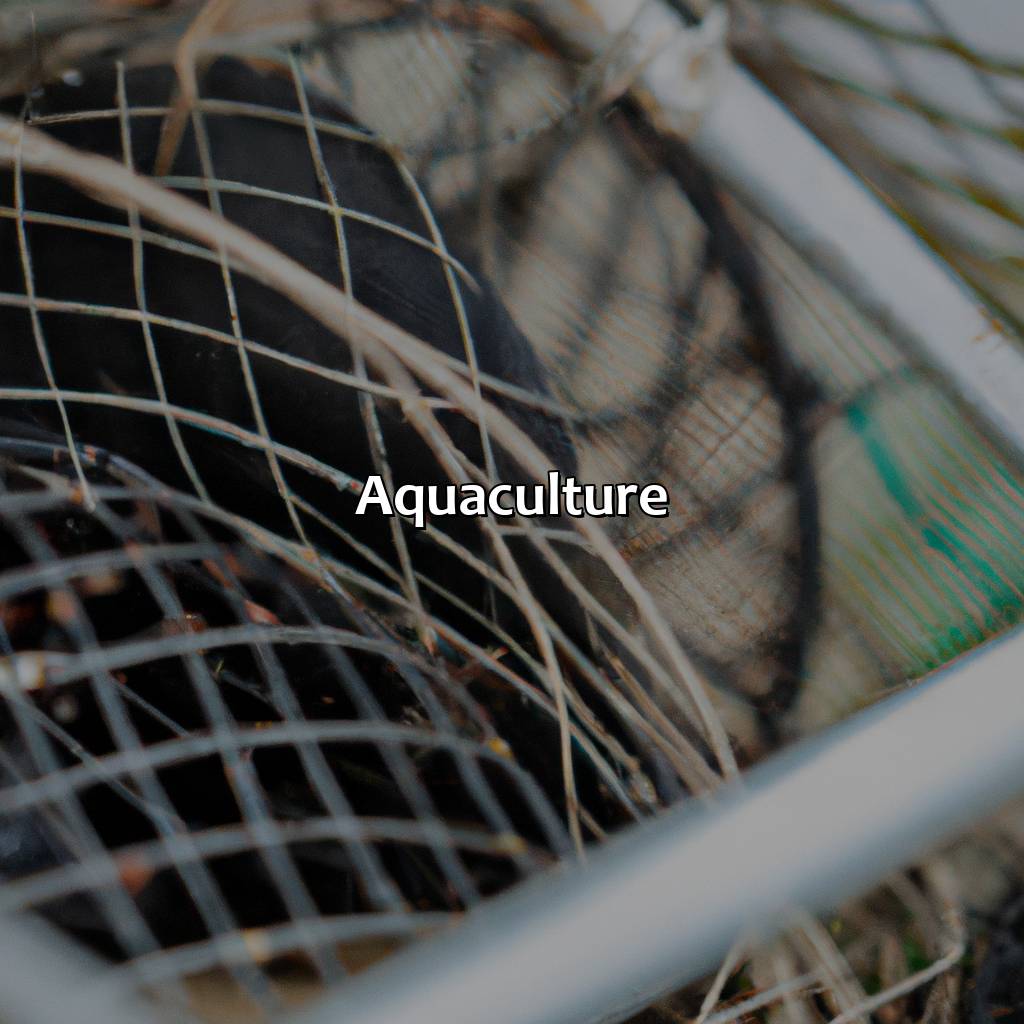
Photo Credits: anglinginsight.com by Gabriel Scott
To grasp Aquaculture, a fundamental process for the seafood industry, explore both open water and closed water systems. Through these systems, it is possible to fish farm and conserve marine life simultaneously.
In the sub-sections of Open Water Systems and Closed Water Systems, dive into the different components of fishery management, imports, exports, and conservation.
Open Water Systems
Aquaculture is a rapidly growing industry that involves various fish farming techniques. One of the primary methods for fish farming is Open Water Systems. This technique allows farmers to raise fish in large bodies of water, like lakes, rivers, and oceans. In these systems, pens or cages are used to contain the fish and keep them safe.
The use of open water systems can be seen in many places around the world. Countries with a significant seafood industry, such as Norway and Chile, have adopted this method due to its effectiveness in raising fish for export and domestic consumption. While this technique has its advantages over other methods, there are also potential drawbacks.
Open water systems require careful monitoring to prevent pollution and disease outbreaks. Furthermore, escaped fish pose a significant threat to native populations of wild fish. In countries where foreign species have been introduced through aquaculture practices, there have been serious concerns about genetic pollution.
As the demand for seafood increases globally, it is essential that we continue to explore sustainable methods for catching and farming fish. By using environmentally friendly practices like open water systems combined with regulation and enforcement measures, we can ensure that our fisheries remain healthy and productive for generations to come. As consumers, it’s important to make informed choices by supporting companies that prioritize sustainability in their fishing practices when selecting products at supermarkets or restaurants while preventing imbalance between countries’ imports and exports of seafood products across borders.
Fish farming may seem like a closed system, but their secrets are nothing compared to my ex’s.
Closed Water Systems
The closed water system is a type of fish farming technology in aquaculture. It involves utilizing tanks and ponds to create an environment that allows for controlled fish rearing with minimal water usage. The system operates as a recirculating aquatic environment, which means water is reused, cleaned and recirculated back into the farm.
Unlike open-water systems, this method minimizes environmental impact and maximizes productivity. Since it requires less or no input of natural resources such as freshwater sources, chemicals and waste are also reduced drastically. This makes it an eco-friendly and sustainable method of fish farming.
Closed Water System farms use efficient filters to remove debris from the water while maintaining optimal conditions for fish growth and reproduction. When properly managed, this type of system can produce high quantities of food protein with a low risk of disease in the fish population.
For individuals who want to make a positive impact on the environment, closed water systems offer an opportunity to contribute toward sustainable sourcing practices in their food choices. Eating sustainably raised seafood helps reduce overfishing and supports healthier ecosystems in both freshwater and saltwater environments.
Choose wisely; opt for farm-raised products produced using conscious methods such as Closed Water Systems, contributing towards more sustainable fishing practices worldwide.
Choosing sustainable fishing methods isn’t just about saving fish, it’s about preserving entire ecosystems for future generations.
Sustainability in Fishing Methods
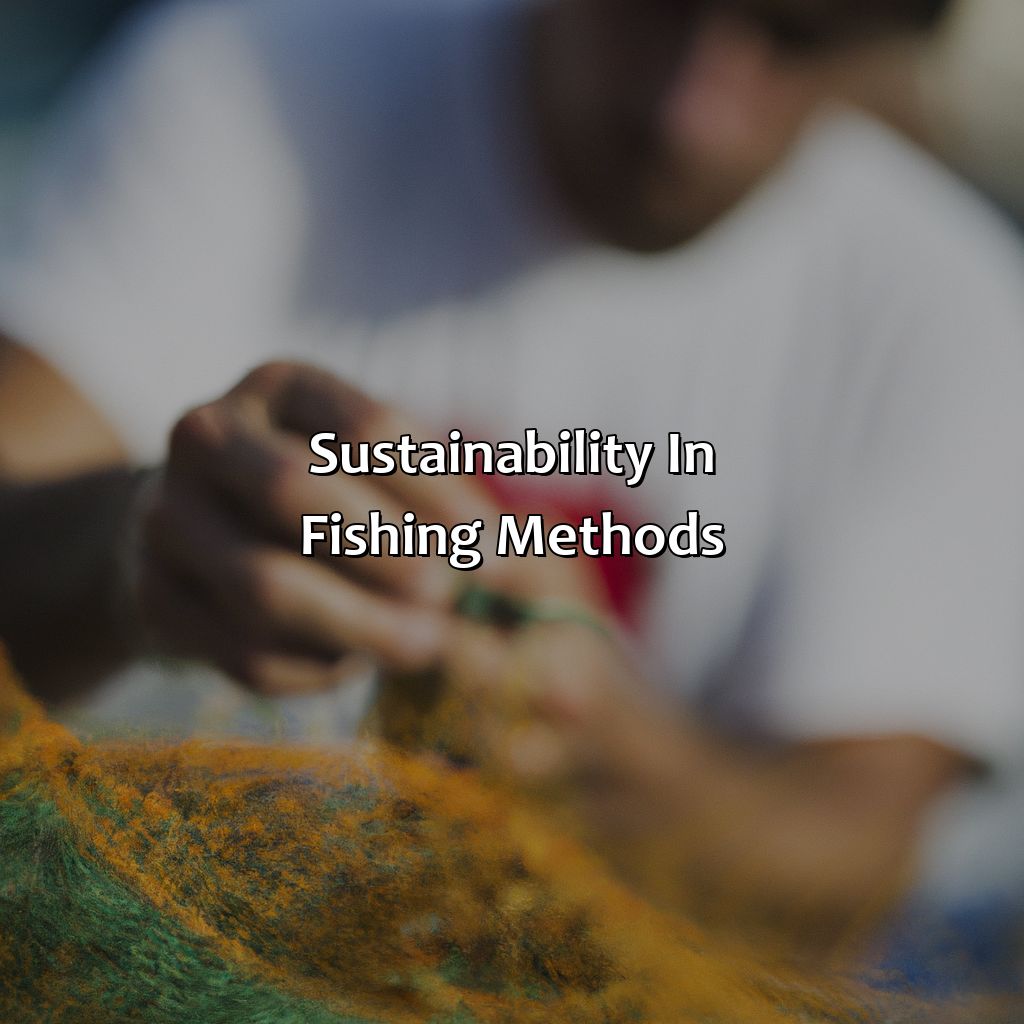
Photo Credits: anglinginsight.com by Andrew Wilson
To promote sustainable fishing, there are various approaches. This section explores them. Bycatch reduction, habitat protection, and regulation and enforcement are all solutions. Each sub-section will explain their advantages, and how they can benefit the ecosystem.
Bycatch Reduction
To reduce the amount of accidental catching of non-target species or “bycatch,” modern fishing methods employ several strategies. Some techniques include using specialized nets and gear that allow smaller fish to escape, modifying fishing areas to avoid sensitive habitats where non-target species are often found, and changing the timing of fishing operations. These methods help fishermen catch more efficiently while reducing harm to other marine life.
To further mitigate bycatch, many countries have implemented regulations requiring fishermen to use specific gear or adhere to size limits for targeted species. Additionally, organizations like the Marine Stewardship Council (MSC) provide certification for sustainable fisheries that meet strict standards for bycatch reduction.
One example of a successful bycatch reduction strategy is seen in the United States’ Pacific halibut fishery. By implementing measures such as seasonal closures and mandatory discarding of some fish caught outside designated areas, the industry was able to reduce bycatch rates by over 90% within three years.
By prioritizing techniques that minimize harm to non-target species, fishermen can not only protect biodiversity but ultimately ensure their own long-term livelihoods as well.
Deep down, we all know that saving fish habitats is just the right thing to do — and it sure beats trying to save endangered goldfish.
Habitat Preservation
In an effort to maintain fish habitats and preserve marine life, various techniques have been developed for habitat preservation. One such technique is the placement of artificial structures in the ocean to mimic natural reefs, cliffs or other structures that are crucial habitats for various fish species.
These structures promote the growth of organisms that serve as food sources for fish, leading to improved fish biodiversity. Furthermore, they provide shelter and hiding places that allow for natural fish behavior and migration patterns. These habitat preservation techniques promote ecological sustainability by protecting not only individual fish species but also the larger ocean ecosystem.
It is also important to note that a thorough understanding of fish anatomy, physiology, taxonomy, and behavior is crucial for effective habitat preservation efforts. The careful monitoring of changes in marine conditions will ensure that efforts remain effective over time.
According to a report published by Ocean Action Agenda (2020), it was found that continued habitat destruction would lead to significant decreases in important fisheries around the world. Therefore, implementing successful habitat preservation methods is significant for both economic and environmental reasons.
Breaking fishing laws is not a crime, it’s a fine art.
Regulation and Enforcement
The effective management of fisheries through regulation and enforcement is crucial to ensure sustainable fishing practices. Fishing regulations refer to the specific laws and guidelines enforced by governing bodies to manage fishing practices. The enforcement of these regulations plays a critical role in preventing illegal, unreported and unregulated (IUU) fishing, which has significant impacts on marine ecosystems and global seafood supplies.
Fishery management is an essential aspect of regulation and enforcement. This management includes setting allowable catch limits, monitoring stocks, protecting habitats, and taking measures to reduce bycatch. Effective regulation and enforcement are necessary to monitor compliance with these measures for sustainable fishing.
Fishing laws vary from country to country, but most have established regulations on gear use, allowable catch limits, vessel requirements, size limits for fish, minimum mesh sizes in nets, closed seasons or areas and fishing permits. These laws also protect endangered species and prevent overfishing.
The effectiveness of regulation depends on proper implementation through active law enforcement activities. Regular patrols can deter illegal fishers from breaking the law as they will fear detection and punishment.
Pro Tip: Stay aware of the latest regulations related to fishing methods you intend to use or support commercial enterprises that follow best practices for sustainability.
Five Facts About Different Fishing Methods Used Around the World:
- ✅ The most commonly used fishing method in the world is longlining, used to catch tuna, swordfish, and other large fish species. (Source: World Wildlife Fund)
- ✅ In Africa, the most common fishing method is seine netting, which involves a large net being pulled through the water to catch fish in large quantities. (Source: Food and Agriculture Organization of the United Nations)
- ✅ In Southeast Asia, fish traps known as fish corrals are used to catch fish, particularly in shallow waters near coral reefs. (Source: National Geographic)
- ✅ In the United States and Canada, trolling is a popular method used for freshwater and saltwater fishing, where bait is trailed behind a moving boat to catch fish. (Source: Fishing Booker)
- ✅ Fly fishing, popular in Europe and North America, involves using a specialized rod and artificial fly to catch fish, with a focus on techniques such as casting and presentation. (Source: Orvis)
FAQs about What Are The Different Fishing Methods Used Around The World?
What are the different fishing methods used around the world?
There are several fishing methods used around the world, including:
- Net Fishing
- Longline Fishing
- Trawling
- Pole Fishing
- Handline Fishing
- Spear Fishing
What is net fishing?
Net fishing is a method used to catch fish using nets. The fish are trapped in the nets and then pulled aboard the fishing vessel. There are several types of net fishing, including trawl net fishing, gillnet fishing, and seine net fishing.
What is longline fishing?
Longline fishing is a method used to catch fish using a long fishing line with baited hooks attached. The line is set across a large area of water and left for a period of time to catch fish. This method is often used to catch larger fish, such as tuna and swordfish.
What is trawling?
Trawling is a method used to catch fish using a net that is dragged behind a fishing vessel. This method is often used to catch fish on the ocean floor, such as cod, haddock, and flounder.
What is pole fishing?
Pole fishing is a method used to catch fish using a long fishing pole with a line and bait attached. This method is often used for recreational fishing and can be done from the shore or a boat.
What is handline fishing?
Handline fishing is a method used to catch fish using a fishing line and bait. The line is held in the hand and the bait is lowered into the water. When a fish bites the hook, the line is reeled in by hand.
What is spear fishing?
Spear fishing is a method used to catch fish using a spear or harpoon. This method is often used for recreational fishing, but can also be used for commercial fishing in some areas.

